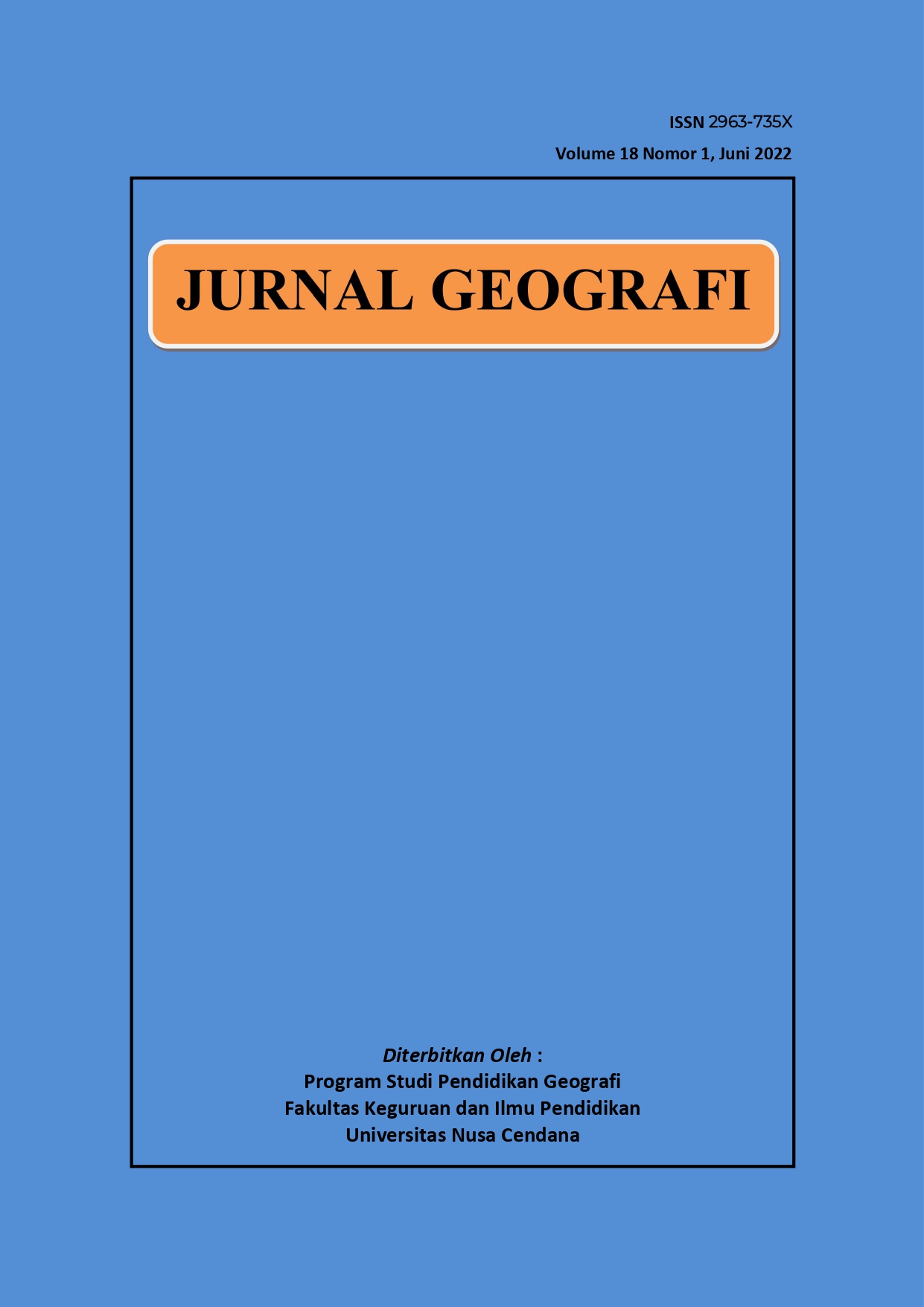KONTRIBUSI UNSUR-UNSUR GEOGRAFI DALAM PERTANIAN KEMIRI DI DESA KERIREA KECAMATAN NANGAPANDA KABUPATEN ENDE NUSA TENGGARA TIMUR
Abstract
This study aims to: (1) Knowing the elements of geography related to candlenut farming. (2) Knowing the availability of land for the development of candlenut plants. (3) Knowing the factors that encourage and inhibit the development of candlenut plants. In this study, the method used is a qualitative descriptive approach. In this study, the population is the candlenut farming community, totaling 178 families. The sample used in this study were 20 farmers and at the same time as respondents in this study, namely by determining proportional sampling (deliberate or real selection). Sources of data come from primary data and secondary data. Data collection methods used are observation, interviews and documentation. Data processing is through reduction, data presentation and drawing conclusions. The results of the study are as follows: (1) Related Elements, namely Soil, Climate, Slope, Water Availability, Labor (farmers), Land (land). (2) Land Availability for Kemiri Plant Development in Kerirea Village Land availability is determined based on data on total local actual production of agricultural commodities (candlenut) in 2019 produced in Kerirea Village. Kerirea Village, Nangapanda District, the state of land availability reaches 1825 hectares. This is because the most prominent and highest number of commodities in Kerirea Village is the agricultural sector, one of which is candlenut. (3) Supporting and Inhibiting Factors in the Development of Kemiri Plants in Kerirea Village, namely Supporting Factors, Factors that cause people in Kerirea Village to be more dominant in cultivating candlenut plants, namely: (a) The topography of Kerirea Village is at an altitude of 100 to 700 meters above sea level, while the requirements To grow candlenut plants in order to obtain good production must be planted at an altitude of 0-800 meters above sea level. This indicates that the research area is suitable for candlenut farming. (b) The land area of Kerirea Village is dominated by dry land and forest so that farmers in Kerirea Village make more use of the existing land in the area for dry land plantations. In addition, farmers are starting to develop candlenut plants. (c) The candlenut plant and its products are very helpful for the people of Kerirea Village in their daily needs, both in the household and in education. This factor encourages the people in Kerirea Village to prioritize candlenut farming compared to other commodities in Kerirea Village. Inhibiting Factors: Obstacles faced by farmers in the development of candlenut plants in Kerirea Village are as follows: (a) Lack of Marketing Network, namely Barriers, namely lack of marketing network for candlenut crops. (b) Pests and Diseases Attacks The next obstacle is pest and disease attacks where candlenut plants are plants that are rarely attacked by pests and diseases, but we cannot expect that at certain times plants will meet them, for example the type of caterpillar pest (CriculaTrifenestrataHelfer) that attacks twigs–candlenut plant twigs and young leaf eaters, as a result the candlenut plant becomes bald so that plant growth is inhibited.

 Chandra Sudarta(1*)
Chandra Sudarta(1*)




